Overview
The article "10 Key Trends Shaping the Wine Business in 2025" presents crucial insights into the emerging trends poised to significantly influence the wine industry by 2025. It underscores the necessity of direct-to-consumer strategies, highlights the role of technological innovations, and emphasizes sustainability initiatives. Additionally, adapting marketing approaches to effectively engage younger consumers is paramount. These elements are essential for wineries aiming to thrive in an increasingly competitive market. Understanding these trends is not just beneficial; it is imperative for success.
Introduction
The wine industry stands on the cusp of a significant transformation, propelled by shifting consumer preferences and innovative strategies. Family-owned wineries are uniquely positioned to respond to the rising demand for direct-to-consumer sales, enabling them to forge deeper relationships with their customers. This not only enhances brand loyalty but also drives sustainable growth. However, as the landscape evolves, the pressing question remains: how can these wineries adeptly navigate the complexities of e-commerce, personalization, and sustainability to flourish in an increasingly competitive market?
Enocap: Transformative DTC Strategies for Family-Owned Wineries
Enocap stands at the forefront of crafting direct-to-consumer (DTC) strategies in , empowering family-owned wineries to cultivate meaningful connections with their customers. By emphasizing the development of robust sales channels, optimizing club memberships, and implementing effective demand generation techniques, Enocap has achieved an impressive average e-commerce growth of 191% for its clients. This transformative approach not only boosts short-term sales but also nurtures long-term customer loyalty, a cornerstone for sustainable growth in the competitive beverage sector.
As market dynamics evolve, wineries in the wine business that embrace these direct-to-consumer strategies are strategically positioned for success, especially as consumer preferences shift toward personalized experiences and eco-friendly practices. The surge in online beverage purchasers—from 1.5 million to 4.1 million—underscores the effectiveness of these strategies. Notably, 27% of new wine club signups now originate through digital channels, emphasizing the critical importance of a robust online presence.
Enocap's comprehensive advisory services, which encompass:
- Customer retention programs
- Media placement
- Brand narrative development
- Strategic capital planning
address challenges such as cash flow issues while fostering significant connections with clients. To maximize growth potential, vineyards should seriously consider integrating these strategies into their operations.

Targeting Younger Consumers: Adapting Marketing Strategies for Future Growth
Wineries must evolve their within the wine business to captivate younger audiences, particularly Millennials and Gen Z. This demographic prioritizes authenticity, sustainability, and unique experiences. By leveraging social media platforms and creating engaging content that reflects their values, wineries can forge a deeper connection with these consumers.
Proven direct-to-consumer strategies include:
- Hosting interactive events
- Offering personalized beverage experiences
These strategies significantly enhance brand visibility and loyalty among younger audiences. Moreover, crafting compelling brand narratives that resonate with these individuals can transform occasional purchasers into dedicated wine club members, driving e-commerce growth in the wine business and bolstering customer loyalty.
Collaborating with influencers who share these values can further amplify outreach and engagement, ensuring wineries remain relevant in a competitive market.
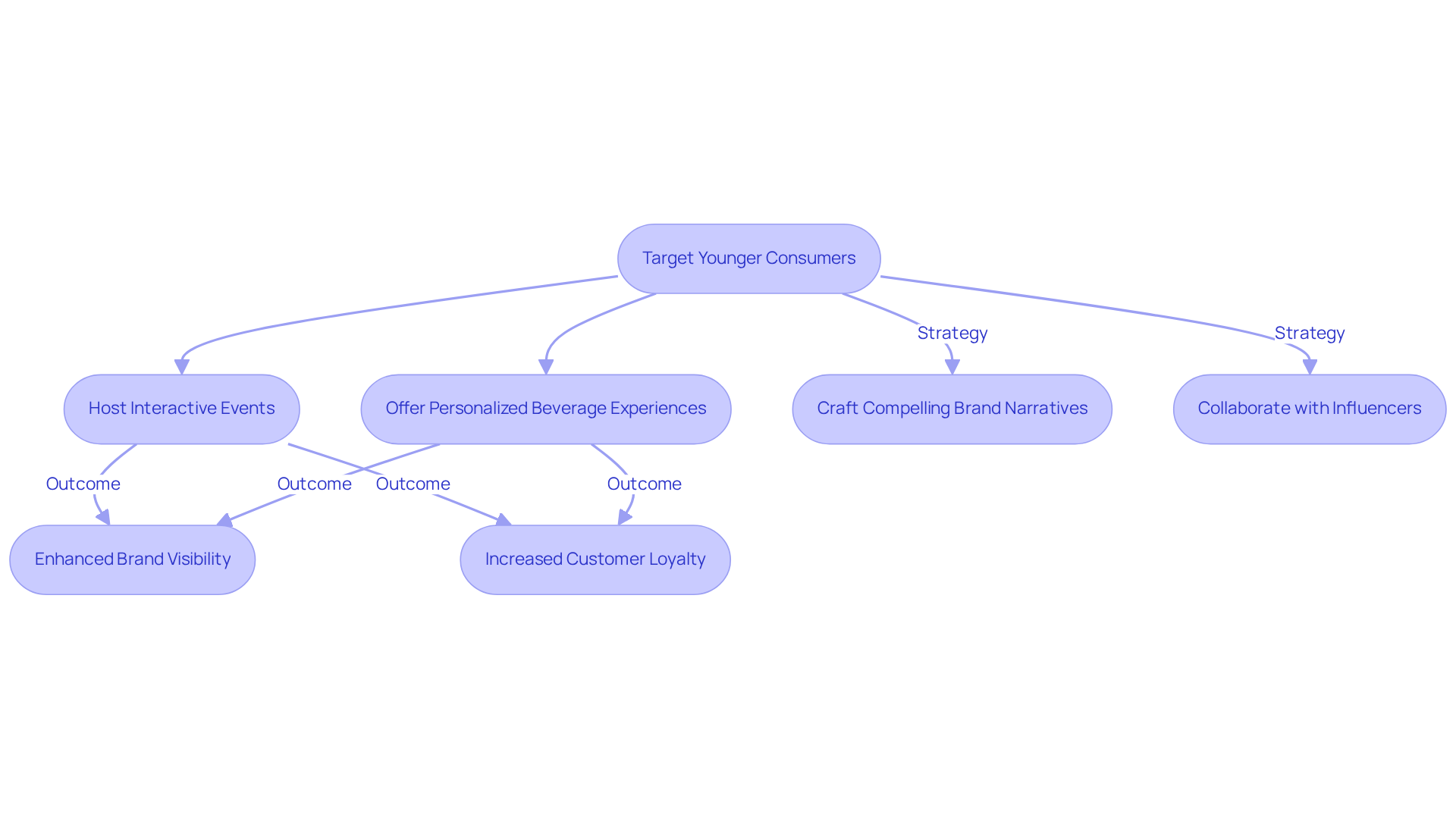
E-Commerce Expansion: Leveraging Online Sales Channels for Growth
The expansion of e-commerce presents a substantial opportunity for the wine business to elevate their sales and broaden their audience reach. By investing in user-friendly online platforms, optimizing websites for mobile accessibility, and leveraging data analytics to gain insights into consumer behavior, businesses can significantly enhance their online presence.
Enocap's transformative direct-to-consumer strategies further bolster this growth by aiding wineries in establishing sustainable channels that support their wine business and foster consistent expansion. Moreover, implementing subscription services and personalized recommendations can convert casual buyers into , thereby driving repeat purchases and enhancing customer loyalty.
Consequently, e-commerce emerges as an essential component of their growth strategy in the wine business, complemented by effective brand storytelling and strategic capital planning.
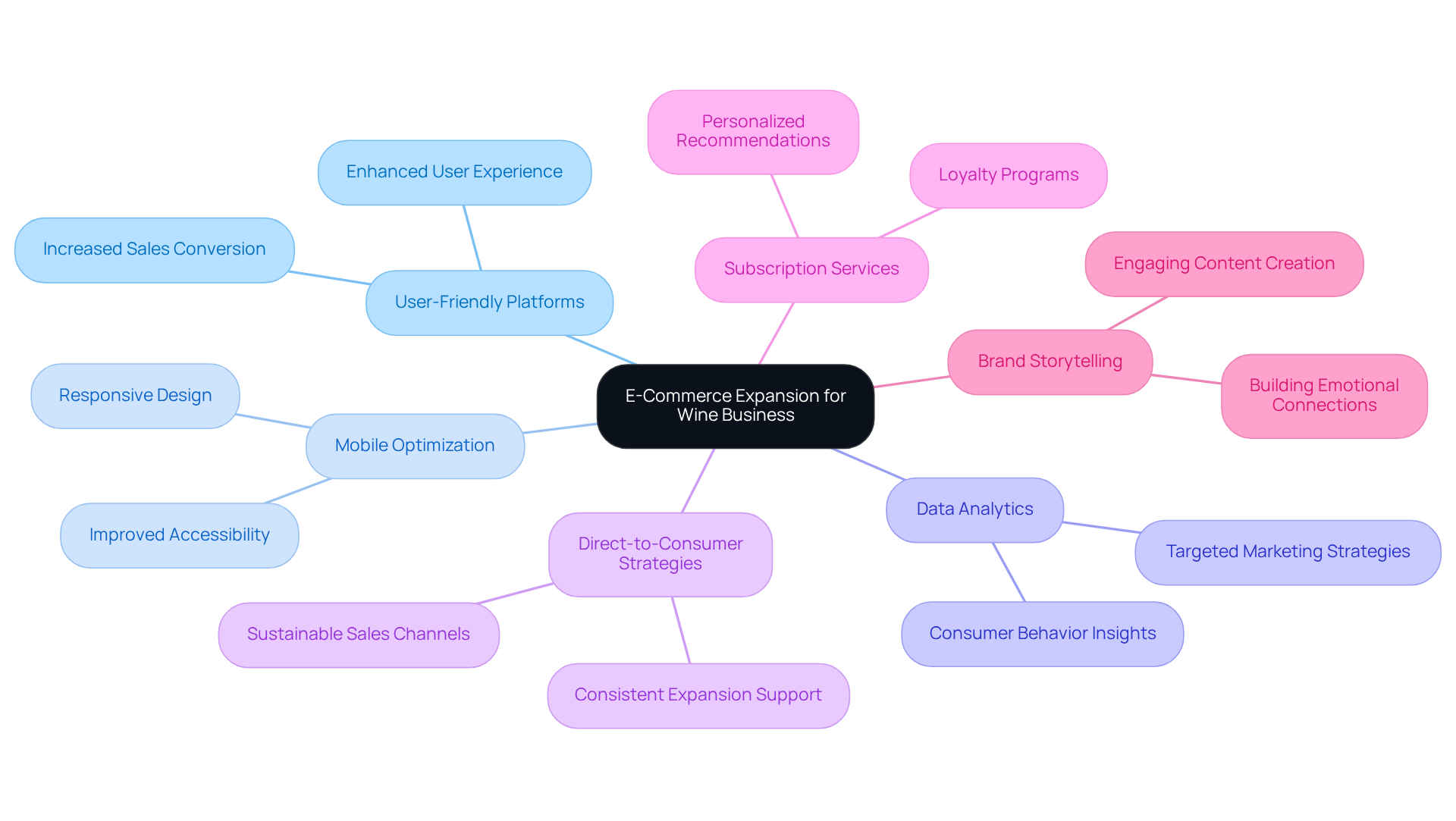
Personalization in Marketing: Creating Tailored Experiences for Wine Consumers
Personalization in marketing is not just a trend; it is a critical strategy in the beverage sector. Wineries can harness customer data in the wine business to craft , such as personalized beverage recommendations that reflect past purchases and preferences.
By implementing targeted email campaigns and providing exclusive deals to loyal customers, the wine business can significantly enhance engagement and cultivate a sense of community. This approach not only makes customers feel valued and understood but also facilitates the establishment of lasting connections that drive higher sales and foster brand loyalty.
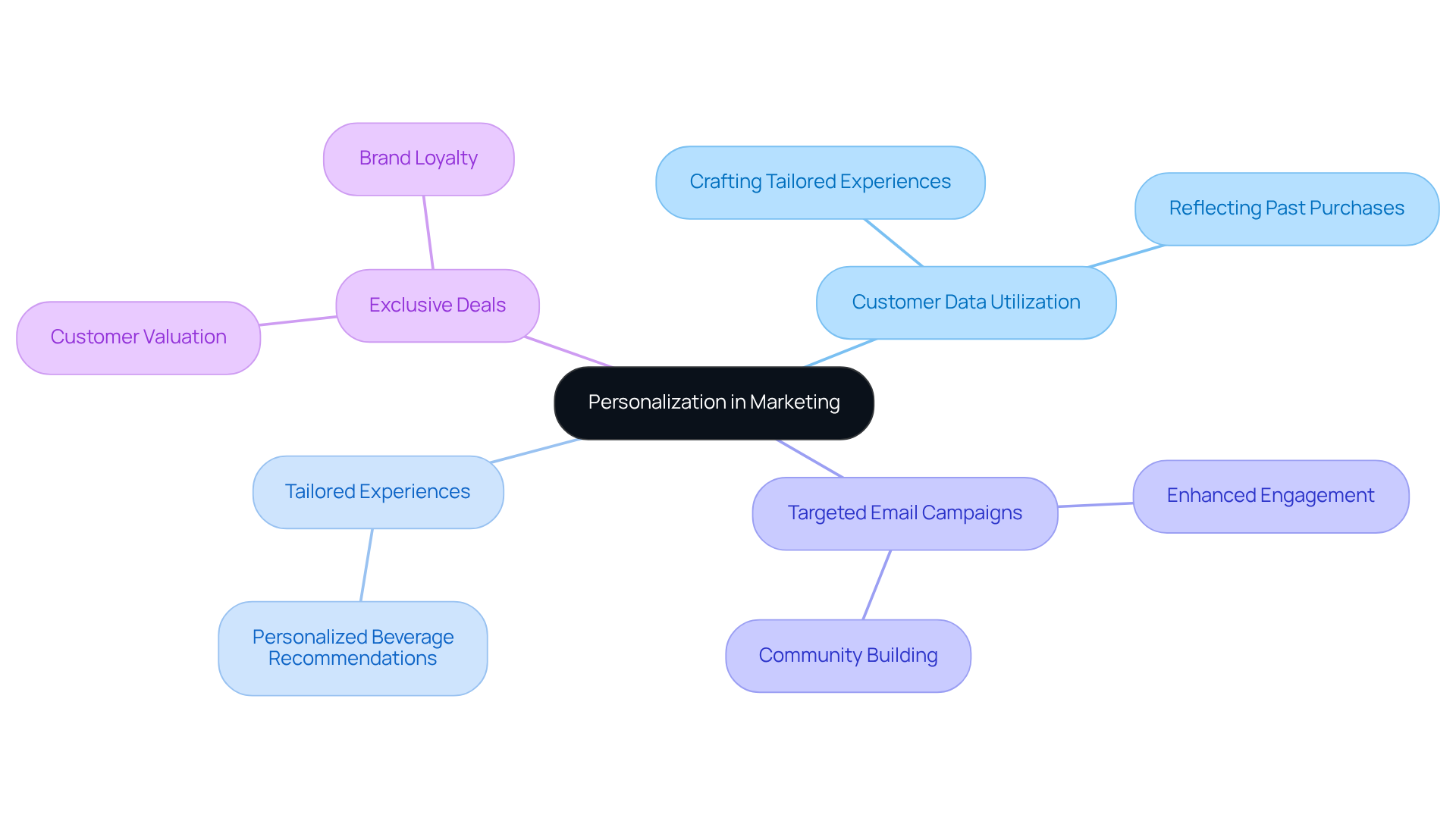
Sustainability Initiatives: Meeting Consumer Demand for Eco-Friendly Practices
Sustainability initiatives are profoundly influencing buyer purchasing decisions in the wine business. Wineries that embrace eco-friendly practices—such as organic farming, water conservation, and sustainable packaging—are well-positioned to attract environmentally conscious consumers. By transparently communicating their sustainability efforts through effective marketing channels, wine producers can not only enhance their brand image but also appeal to a broader audience.
Furthermore, obtaining certifications and forming partnerships with reputable environmental organizations can significantly validate their commitment to sustainability, reinforcing their credibility in the marketplace.
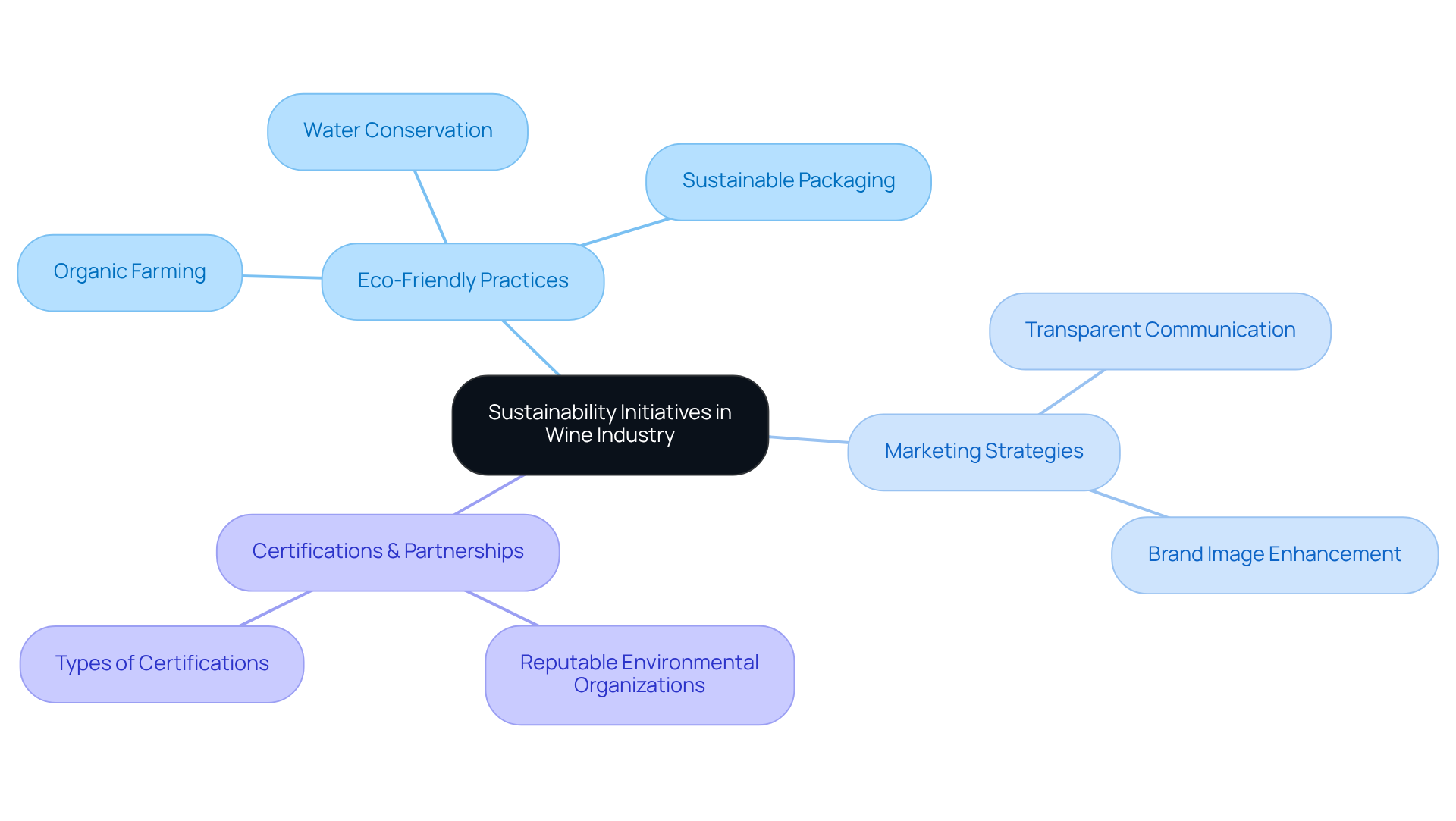
Technological Innovation: Embracing New Tools for Production and Sales
Technological innovation is revolutionizing the wine business, providing producers with to enhance both production and sales. Precision viticulture techniques are optimizing grape cultivation, while sophisticated e-commerce platforms streamline online sales processes. A pivotal element in this transformation for the wine business is the adoption of customer relationship management (CRM) systems, which empower producers to gain deeper insights into consumer preferences and refine their marketing strategies. Enocap plays a crucial role in assisting vineyards with the implementation of these CRM systems, ensuring they can effectively engage with their customers and build sustainable direct-to-consumer channels that drive consistent growth.
Moreover, strategic capital planning is essential for the wine business to effectively leverage these technologies, enhancing operational efficiency and minimizing waste while significantly boosting profitability. For instance, establishments that have successfully integrated CRM systems report enhanced customer engagement and retention, with 27% of new wine club signups originating from digital channels. Furthermore, Enocap's clients experienced an average e-commerce growth of 191% in 2020, underscoring the significant impact of technology on profitability and customer engagement.
As the wine business progresses, the utilization of technology alongside innovative DTC approaches and tactical capital planning will be crucial for vineyards aiming to thrive in a competitive environment.
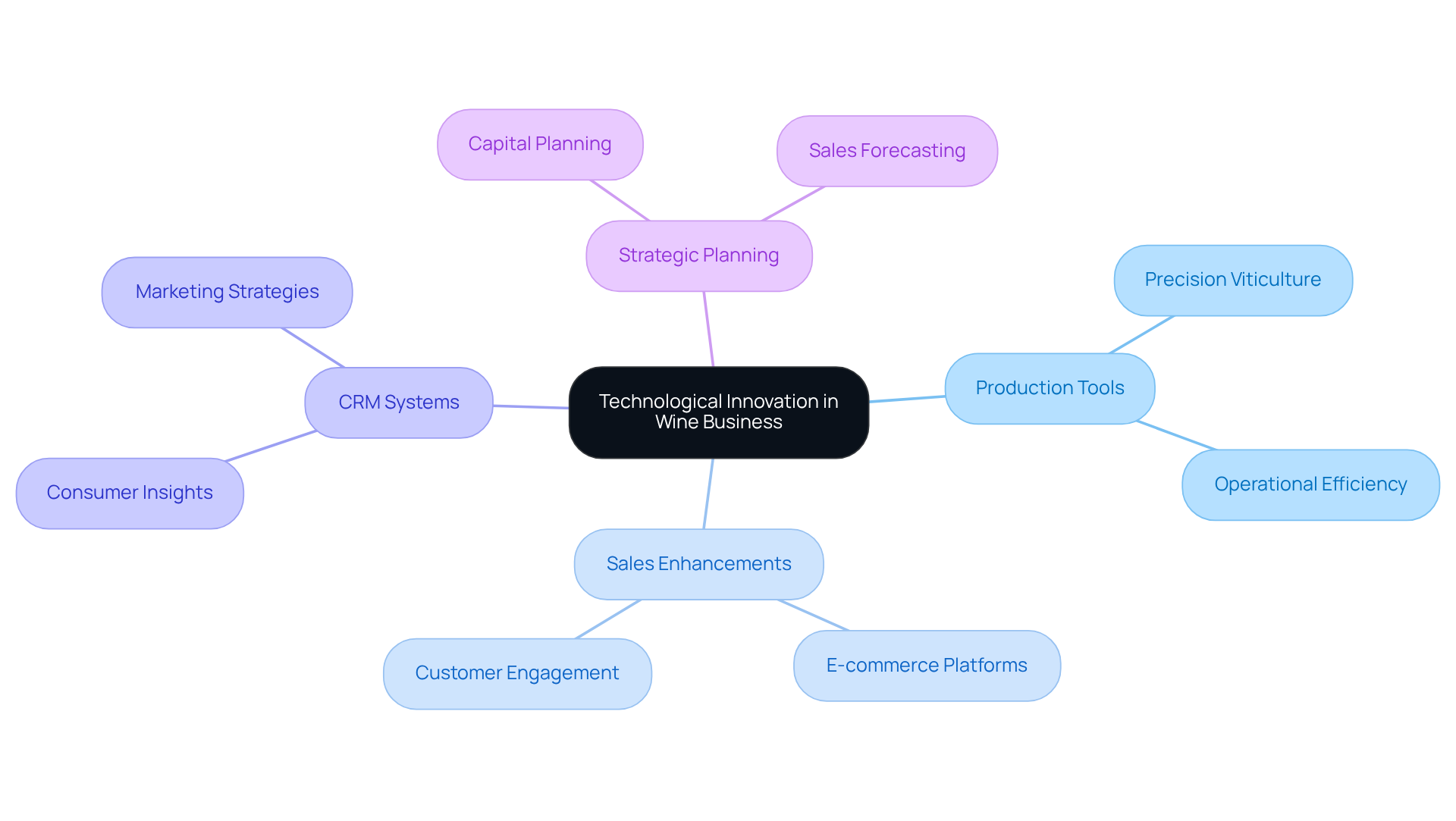
Brand Storytelling: Engaging Consumers Through Compelling Narratives
Brand storytelling serves as a vital strategy for the wine business, helping vineyards to connect with customers and foster lasting relationships. By sharing their unique histories, core values, and distinctive qualities, vineyards can forge emotional connections that resonate with their audience. This engagement is facilitated through various channels, including social media, blogs, and tasting events, which allow for direct interaction and feedback.
Genuine stories that emphasize a commitment to quality and sustainability not only help producers in the wine business stand out in a competitive market but also cultivate brand loyalty among discerning buyers. As the demand for transparency and connection rises, wineries in the wine business that effectively communicate their narratives are better positioned to meet the expectations of modern consumers, who prioritize authenticity and sustainability in their purchasing decisions.
Notably, 27% of new beverage club registrations originate from digital channels, underscoring the significance of leveraging these platforms to engage today's shoppers. By incorporating insights from digital technologies, such as sentiment analysis and buyer surveys, storytelling efforts can be further refined.
As Audrey Chaillet observes, "Consumers increasingly want to know the story behind the wine - its provenance, the winemaking process, and the people involved." To implement effective storytelling strategies, vineyards should prioritize creating engaging content that showcases their , appealing to the growing consumer interest in sustainability.
Additionally, strategic capital planning, encompassing media placement and public relations, can bolster these initiatives, ensuring that family-owned vineyards thrive for generations in the wine business by establishing sustainable direct-to-consumer channels that support consistent growth.
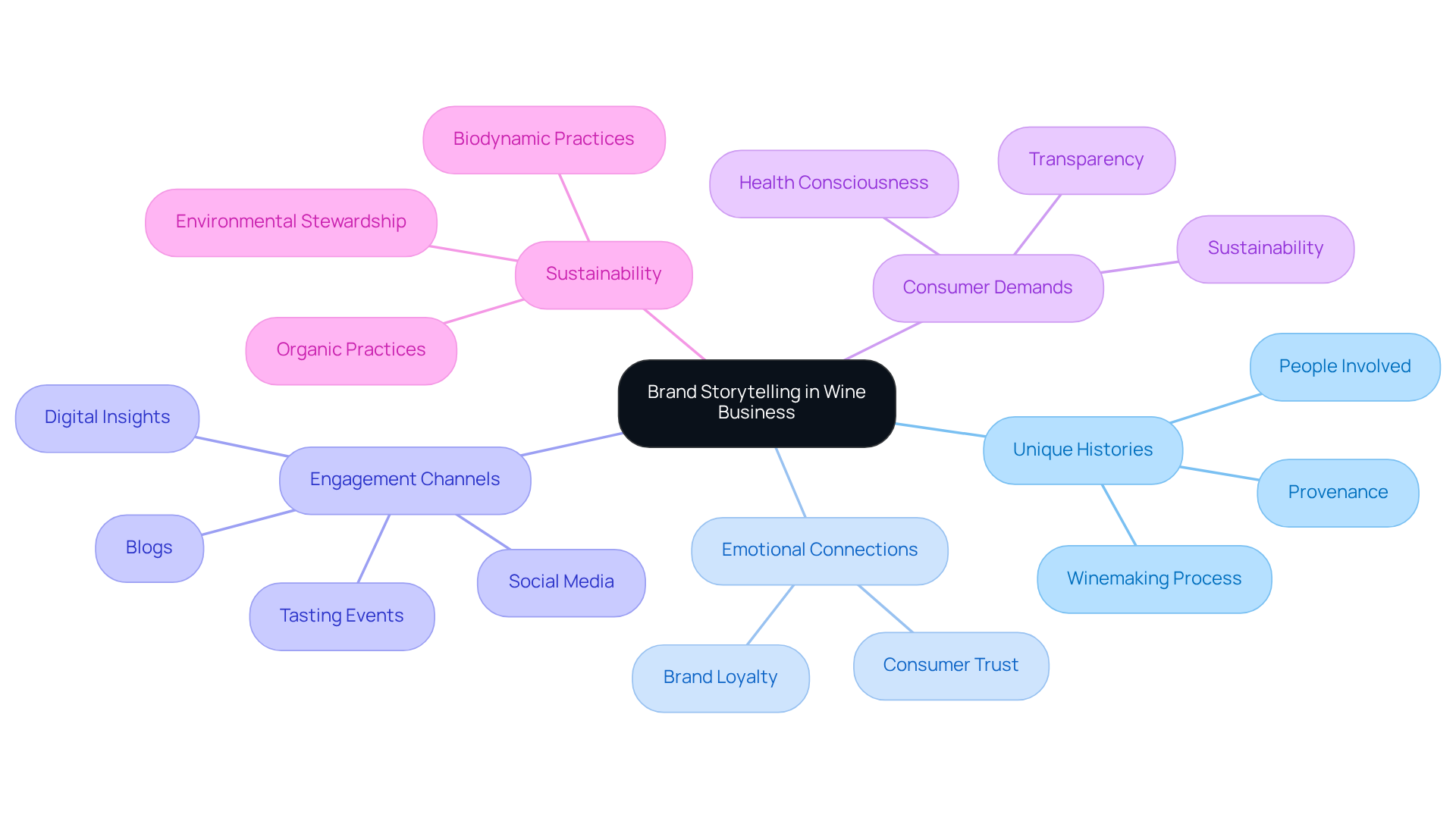
Financial Health Trends: Strategic Capital Planning for Wineries
Financial well-being is paramount for the wine business as vineyards navigate a fluctuating market. Enocap's strategic capital planning empowers producers to manage cash flow efficiently, seize growth opportunities, and mitigate risks. By analyzing financial trends and leveraging data-driven insights, vineyards can make informed decisions about debt, equity, and operational investments.
Furthermore, Enocap offers that enable wineries in the wine business to unlock direct-to-consumer revenue, craft compelling brand narratives, and secure the right capital for sustainable growth. Establishing robust financial practices not only enhances overall resilience in the wine business but also ensures long-term success in the industry.
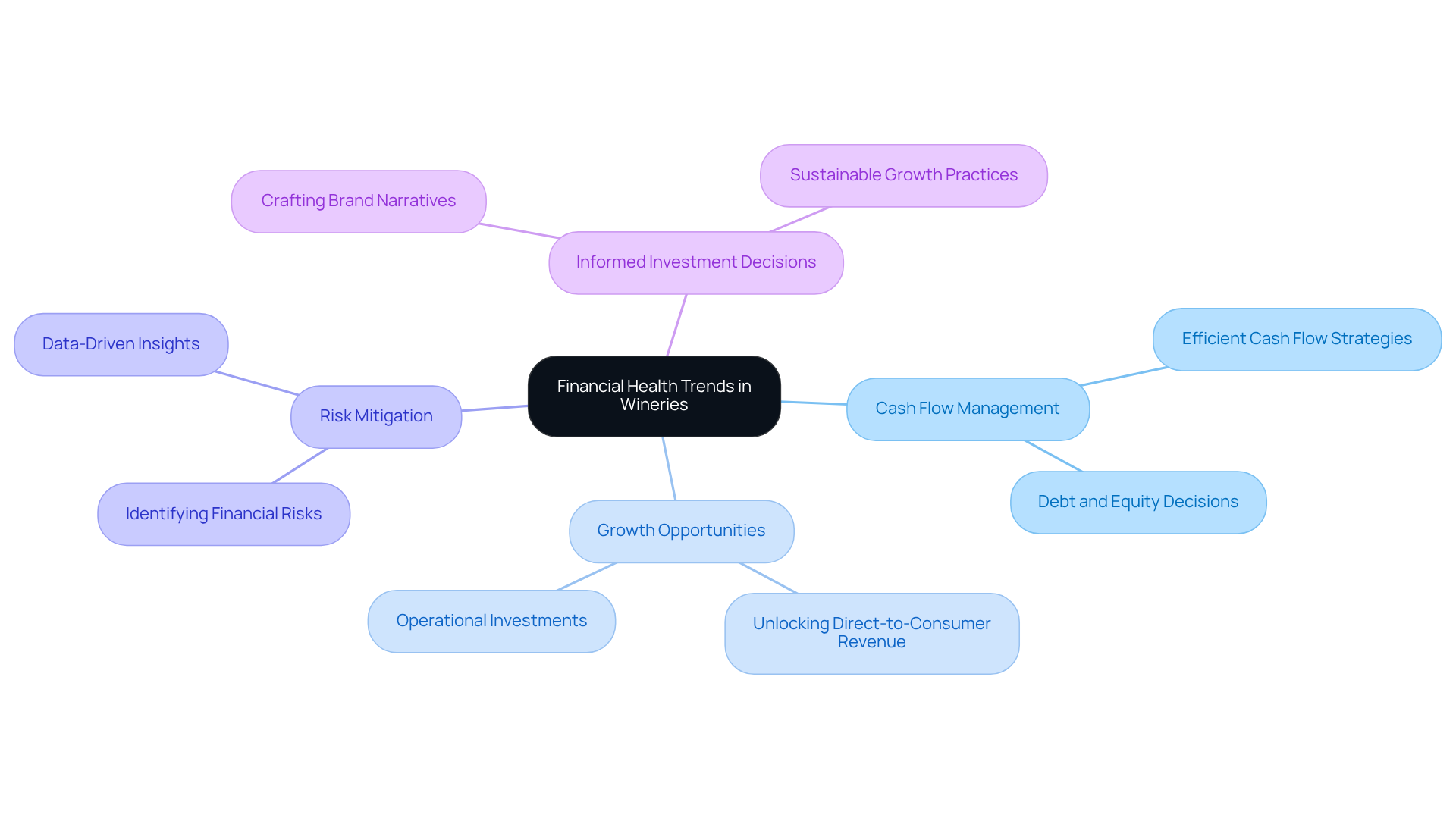
Demographic Shifts: Understanding Changing Wine Consumption Patterns
Demographic changes are reshaping the beverage market, with younger individuals increasingly influencing consumption trends. Wineries must grasp these shifts to effectively target their marketing efforts within the wine business. As Baby Boomers gradually decrease their beverage consumption, Millennials and Gen Z emerge as pivotal demographics. These younger consumers often seek unique, experiential offerings and prioritize brands that resonate with their values.
By implementing established direct-to-consumer strategies in the wine business, such as:
- Enhancing clubs
- Crafting engaging brand narratives
Producers can . Adapting product lines and marketing strategies in the wine business to meet these evolving preferences not only captures new market opportunities but also bolsters customer loyalty and propels e-commerce growth.
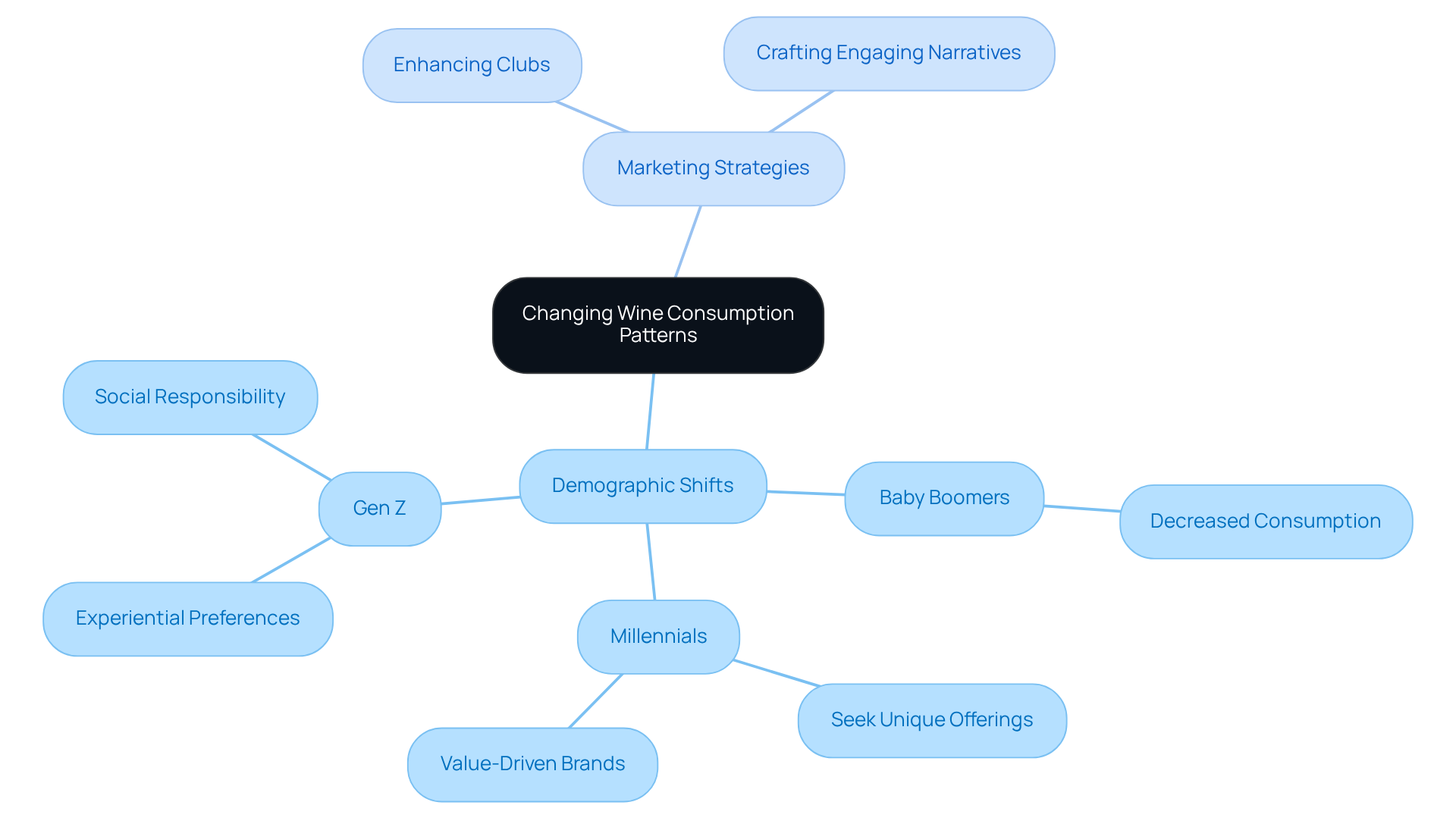
Social Media Influence: Harnessing Digital Platforms for Wine Marketing
Social media has emerged as a pivotal tool in beverage marketing, enabling producers to forge meaningful connections with consumers and transform casual visitors into loyal clients. By creating compelling content and providing behind-the-scenes insights, wineries can significantly elevate their brand visibility and cultivate community engagement within the wine business. Platforms like Instagram and TikTok are particularly effective in showcasing the visual allure of beverages and vineyard experiences, making them ideal for attracting a broader audience. Notably, 27% of new club signups originated from digital channels, underscoring the power of social media in enhancing consumer engagement and optimizing club memberships.
For instance, Murphy-Goode Winery's social media campaign, designed for extensive media exposure, achieved an impressive 130% increase in sales revenue and a 70% rise in tasting room traffic, highlighting the potential of effective digital marketing strategies. Additionally, collaborations with influencers have proven to be transformative in driving beverage sales. With 700,000 individuals viewing wine-related videos monthly, leveraging influencers can significantly expand a winery's reach and credibility. Stormhoeck Winery's partnership with wine bloggers resulted in an astonishing increase in sales from 50,000 to 300,000 cases annually, illustrating the impact of influencer marketing within the wine business.
Moreover, Pacific Rim Winery's social media initiative led to a staggering 7000% surge in website traffic and a 15% increase in revenue, further exemplifying the effectiveness of digital marketing strategies. By strategically harnessing social media and influencer partnerships as part of a comprehensive direct-to-consumer (DTC) approach, the wine business can not only drive traffic to its website but also nurture enduring relationships with its audience, ultimately boosting sales and brand loyalty. Enocap's established methods for e-commerce expansion and customer retention can further enhance these efforts, ensuring that family-owned vineyards thrive in a competitive landscape. To maximize these strategies, wineries should contemplate integrating with Enocap's expertise to optimize their direct-to-consumer channels.
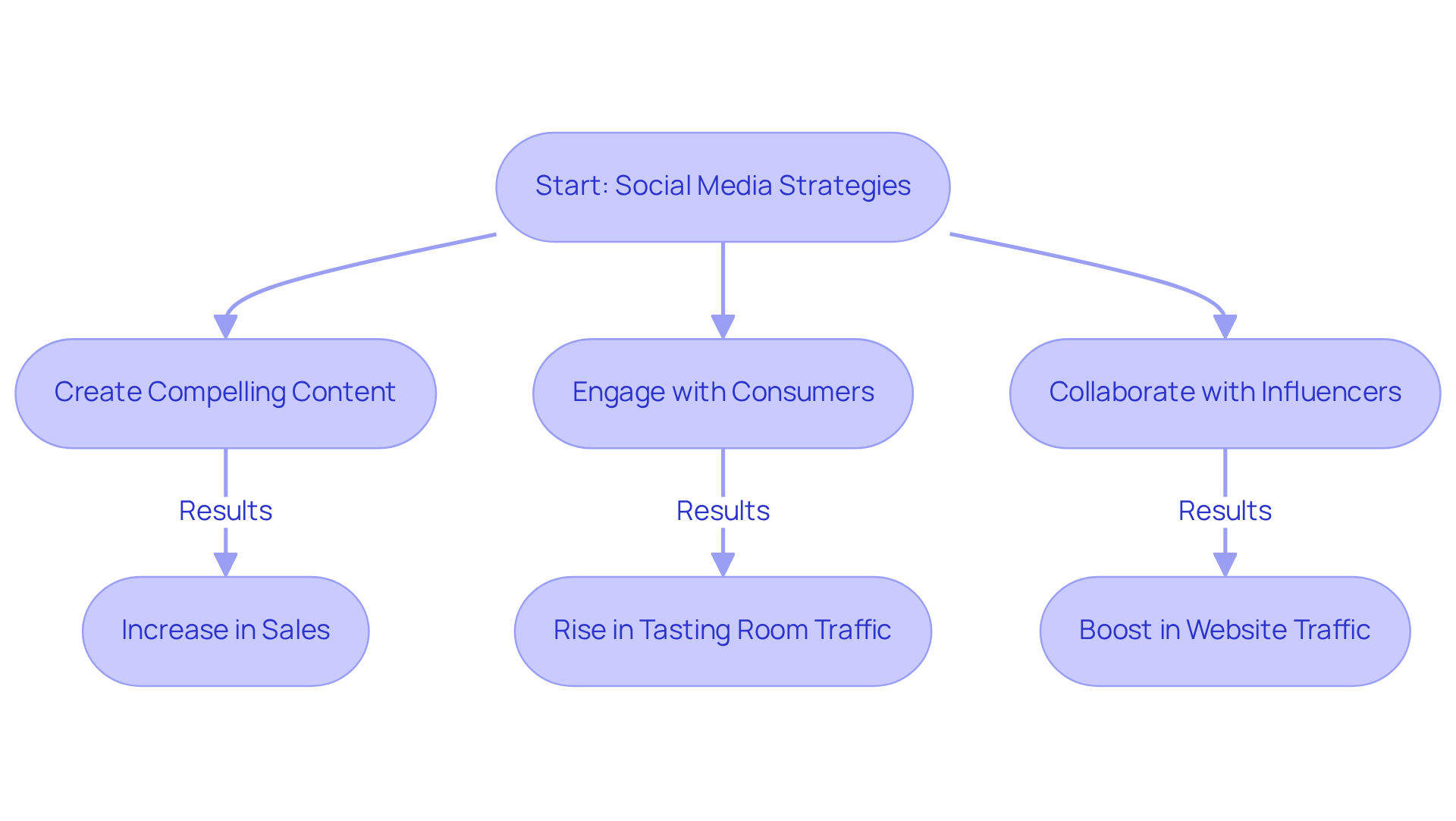
Conclusion
The wine business stands on the brink of a significant transformation, with emerging trends set to redefine its landscape by 2025. By emphasizing direct-to-consumer strategies, wineries can cultivate deeper connections with their clientele, ultimately fostering enhanced customer loyalty and sustainable growth. Adopting innovative marketing approaches tailored to younger consumers, embracing e-commerce expansion, and harnessing technological advancements will enable vineyards to navigate the complexities of a rapidly changing market.
Key insights from the article underscore the necessity for wineries to adapt to shifting consumer preferences, particularly among Millennials and Gen Z, who prioritize authenticity, sustainability, and personalized experiences. The rise of e-commerce and social media as vital marketing tools further highlights the importance of a robust online presence and engaging brand narratives. Additionally, sustainable practices and strategic capital planning emerge as crucial components for long-term success, allowing wineries not only to meet consumer demand but also to thrive financially.
As the wine industry progresses, the integration of these trends and strategies will be essential for wineries aiming to remain competitive. By embracing innovation and focusing on the evolving preferences of their target audience, vineyards can ensure they not only survive but flourish in this dynamic environment. The call to action is clear: wineries must invest in their direct-to-consumer capabilities and leverage digital platforms to build lasting relationships with consumers, ultimately shaping the future of the wine business in 2025 and beyond.
Frequently Asked Questions
What is Enocap and what role does it play in the wine business?
Enocap is a company that specializes in crafting direct-to-consumer (DTC) strategies for family-owned wineries, helping them build meaningful connections with customers and achieve significant e-commerce growth.
What are some key strategies that Enocap employs to support wineries?
Enocap focuses on developing robust sales channels, optimizing club memberships, and implementing effective demand generation techniques to boost sales and customer loyalty.
How successful have Enocap's strategies been for its clients?
Enocap has achieved an average e-commerce growth of 191% for its clients, indicating the effectiveness of its DTC strategies.
Why is a strong online presence important for wineries?
A strong online presence is critical as 27% of new wine club signups now originate through digital channels, highlighting the shift towards online purchasing and the need for wineries to adapt.
What advisory services does Enocap offer to wineries?
Enocap offers services such as customer retention programs, media placement, brand narrative development, and strategic capital planning to address challenges and foster client connections.
How can wineries attract younger consumers?
Wineries can attract younger consumers, particularly Millennials and Gen Z, by evolving their marketing strategies to emphasize authenticity, sustainability, and unique experiences, often through social media engagement.
What are some proven strategies to engage younger audiences?
Proven strategies include hosting interactive events and offering personalized beverage experiences, which enhance brand visibility and loyalty among younger consumers.
How does e-commerce contribute to the growth of wineries?
E-commerce allows wineries to elevate sales and broaden audience reach by investing in user-friendly online platforms, optimizing mobile accessibility, and utilizing data analytics to understand consumer behavior.
What methods can help convert casual buyers into loyal customers?
Implementing subscription services and personalized recommendations can help convert casual buyers into loyal wine club members, driving repeat purchases and enhancing customer loyalty.
What is the overall importance of e-commerce in the wine business?
E-commerce is essential for growth in the wine business, as it supports sustainable sales channels, enhances brand storytelling, and facilitates strategic capital planning.




